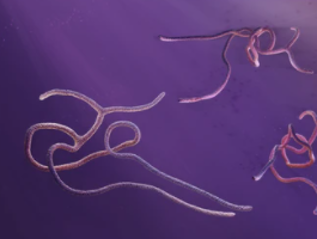Lipidomics in EBOV Infection

Lipidomics can qualitatively and quantitatively characterize individual lipid molecules and classify their changes in biological systems, providing vital information for identifying the biochemical mechanisms underlying the progression of lipid-related diseases. Ebola virus (EBOV) is a negative single-stranded RNA virus belonging to the Filoviridae family and can cause severe and fatal consequences in humans, such as fatal hemorrhagic fever. Since the liver is the center of lipid metabolism throughout the body, it is also the primary target organ for EBOV infection. Researchers have performed a comprehensive examination of the Ebola virus disease (EVD) lipidome.
Ebola virus disease (EVD)
Ebola virus disease (EVD) caused by the Ebola virus (EBOV), is a rare and fatal disease mainly located in sub-Saharan Africa. As one of the most deadly infectious diseases, EVD is believed to be a zoonosis transmitted by bats, chimpanzees, monkeys, and other animal reservoirs. Humans can be infected with the EBOV through close contact with infected animals, then the virus spreads from person to person. There are a series of symptoms developed after EBOV infection, including fever, fatigue, muscle pain, diarrhea, rash, multi-system organ failure, and usually leading to death. Over the past decade, there have been two outbreaks of EVD, including the first and largest outbreak between 2014 and 2016 in West Africa and the second ongoing outbreak in the Democratic Republic of the Congo (DRC) and Guinea from 2018. As lipids play important roles as membrane structural building blocks, energy sources, and signaling molecules, profiling the human plasma lipidome provides insight into critical illness and diseased states, including EVD.
Plasma lipidome in EVD
Using liquid chromatography coupled with tandem mass spectrometry (LC-MS/MS), the researchers compared the plasma lipidome from EVD patients (including survivors and fatalities) and healthy volunteers. The survivors included survivors after initial diagnosis, and during EVD and recovery. 423 lipids covering four lipid categories and 19 subclasses were identified. Overall, there was a significant alteration of lipid metabolism in EVD. EVD survivors had greater amounts of long-chain polyunsaturated fatty acids (LCPUFA) diacylglycerophosphocholines (PCs) in their lipids, while EVD fatalities contained more triacylglycerols (TGs) with longer unsaturated fatty acid chains. There were lipids that increase with fatal outcomes, including diacylglycerophosphoserine (PS), diacylglycerophosphoethanolamine (PE), ceramides (Cer), diacylglycerophosphoglycerol (PG), and diacylglycerol (DG). While four lipid subclasses, including monoacylglycerophosphocholine (LPC), PC, monoacylglycerophosphoethanolamine (LPE), and diacylglycerophosphoinositol (PI) were more abundant in survivors and increased with convalescence. In addition, EBOV depends on PS lipids for viral entry and egress. Researchers suggested that the ratios of PS lipids in EVD were associated with the presence of extracellular vesicles (EVs), including microvesicles (MVs) and exosomes.
Based on the lipidomics study of EVD, the lipid metabolism in human plasma is related to EVD outcome, holding the potential to identify the states of disease and recovery. Creative Proteomics has been developing metabolomics detection methods and data analysis methods for many years. Based on professional scientists and advanced platforms, we can identify different lipids and determine their alternations in various matrices, including plasma, serum, and urine, and cell extracts. For more information on how we can help you, please feel free to contact us.
Reference
- Kyle, J. E., et al. (2019). "Plasma lipidome reveals critical illness and recovery from human Ebola virus disease." Proceedings of the National Academy of Sciences, 116(9), 3919-3928.
Related services
* For research use only.

